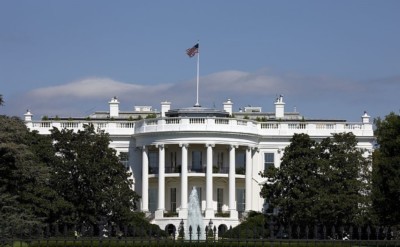Taking A Page From Pharma’s Playbook To Fight The Opioid Crisis
From Kaiser Health News, here is the latest: an interview with Dr. Mary Meengs, medical director at the Humboldt Independent Practice Association, on curbing opioid addiction through the reduction of prescription painkillers.
Dr. Mary Meengs remembers the days, a couple of decades ago, when pharmaceutical salespeople would drop into her family practice in Chicago, eager to catch a moment between patients so they could pitch her a new drug.
Now living in Humboldt County, Calif., Meengs is taking a page from the pharmaceutical industry’s playbook with an opposite goal in mind: to reduce the use of prescription painkillers.
Meengs, medical director at the Humboldt Independent Practice Association, is one of 10 California doctors and pharmacists funded by Obama-era federal grants to persuade medical colleagues in Northern California to help curb opioid addiction by altering their prescribing habits.
She committed this past summer to a two-year project consisting of occasional visits to medical providers in California’s most rural areas, where opioid deaths and prescribing rates are high.
“I view it as peer education,” Meengs said. “They don’t have to attend a lecture half an hour away. I’m doing it at [their] convenience.”
This one-on-one, personalized medical education is called “academic detailing” — lifted from the term “pharmaceutical detailing” used by industry salespeople.
Detailing is “like fighting fire with fire,” said Dr. Jerry Avorn, a Harvard Medical School professor who helped develop the concept 38 years ago. “There is some poetic justice in the fact that these programs are using the same kind of marketing approach to disseminate helpful evidence-based information as some [drug] companies were using … to disseminate less helpful and occasionally distorted information.”
Recent lawsuits have alleged that drug companies pushed painkillers too aggressively, laying the groundwork for widespread opioid addiction.
Avorn noted that detailing has also been used to persuade doctors to cut back on unnecessary antibiotics and to discourage the use of expensive Alzheimer’s disease medications that have side effects.
Kaiser Permanente, a large medical system that operates in California, as well as seven other states and Washington, D.C., has used the approach to change the opioid-prescribing methods of its doctors since at least 2013. (Kaiser Health News is not affiliated with Kaiser Permanente.)
In California, detailing is just one of the ways in which state health officials are attempting to curtail opioid addiction. The state is also expanding access to medication-assisted addiction treatment under a different, $90 million grant through the federal 21st Century Cures Act.
The total budget for the detailing project in California is less than $2 million. The state’s Department of Public Health oversees it, but the money comes from the federal Centers for Disease Control and Prevention through a program called “Prevention for States,” which provides funding for 29 states to help combat prescription drug overdoses.
The California doctors and pharmacists who conduct the detailing conversations are focusing on their peers in the three counties hardest hit by opioid addiction: Lake, Shasta and Humboldt.
They arrive armed with binders full of facts and figures from the CDC to help inform their fellow providers about easing patients off prescription painkillers, treating addiction with medication and writing more prescriptions for naloxone, a drug that reverses the toxic effects of an overdose.
“Academic detailing is a sales pitch, an evidence-based … sales pitch,” said Dr. Phillip Coffin, director of substance-use research at San Francisco’s Department of Public Health — the agency hired by the state to train the detailers.
In an earlier effort, Coffin said, his department conducted detailing sessions with 40 San Francisco doctors, who have since increased their prescriptions of naloxone elevenfold.
“One-on-one time with the providers, even if it was just three or four minutes, was hugely beneficial,” Coffin said. He noted that the discussions usually focused on specific patients, which is “way more helpful” than talking generally about prescription practices.
Meengs and her fellow detailers hope to make a dent in the magnitude of addiction in sparsely populated Humboldt County, where the opioid death rate was the second-highest in California last year — almost five times the statewide average. Thirty-three people died of opioid overdoses in Humboldt last year.
One recent afternoon, Meengs paid a visit during the lunch hour to Fortuna Family Medical Group in Fortuna, a town of about 12,000 people in Humboldt County.
“Anybody here ever known somebody, a patient, who passed away from an overdose?” Meengs asked the group — a physician, two nurses and a physician assistant — who gathered around her in the waiting room, which they had temporarily closed to patients.
“I think we all do,” replied the physician, Dr. Ruben Brinckhaus.
Brinckhaus said about half the patients at the practice have a prescription for an opioid, anti-anxiety drug or other controlled substance. Some of them had been introduced to the drugs years ago by other prescribers.

Dr. Ruben Brinckhaus says his small family practice in Fortuna, Calif., has been trying to wean patients off opiates. (Pauline Bartolone/California Healthline)
Meengs’ main goal was to discuss ways in which the Fortuna group could wean its patients off opioids. But she was not there to scold or lecture them. She asked the providers what their challenges were, so she could help them overcome them.
Meengs will keep making office calls until August 2019 in the hope that changes in the prescribing behavior of doctors will eventually help tame the addiction crisis.
“It’s a big ship to turn around,” said Meengs. “It takes time.”
Source:
Bartolone P. (14 November 2017). "Taking A Page From Pharma’s Playbook To Fight The Opioid Crisis" [Web blog post]. Retrieved from address https://khn.org/news/taking-a-page-from-pharmas-playbook-to-fight-the-opioid-crisis/
SaveSave
The Latest: House passes sweeping GOP tax overhaul
WASHINGTON (AP) — The Latest on House consideration of the tax overhaul (all times local):
1:50 p.m.
The House has passed a sweeping Republican tax bill cutting taxes for corporations and many people. It puts GOP leaders closer to delivering to President Donald Trump a crucial legislative achievement after nearly a year of failures.
The House voted 227-205 along party lines to approve the bill, which would bring the biggest revamp of the U.S. tax system in three decades.
Most of the House bill’s reductions would go to business. Both the Senate and House would slash the 35 percent corporate tax rate to 20 percent and reduce levies on millions of partnerships and certain corporations, including many small businesses.
Personal income tax rates for many would be reduced through some deductions, and credits would be reduced or eliminated. But projected federal deficits would grow by $1.5 trillion over the coming decade.

___
12:15 p.m.
Democrats are using new projections by Congress’ nonpartisan tax analysts to call the Senate Republican tax bill a boon to the wealthy that boosts middle-income families’ taxes.
The Joint Committee on Taxation estimated that starting in 2021, many families earning less than $30,000 would have tax increases under the bill. By 2027, families earning up to $75,000 would face higher levies, while those earning more would get tax cuts.
Republicans say the new calculations reflect two provisions in the bill.
The Senate measure ends personal income tax cuts beginning in 2026 because Republicans needed to reduce the bill’s costs to obey the chamber’s budget rules.
It also abolishes the requirement under former President Barack Obama’s health care law that people buy insurance. That means fewer people getting federally subsidized coverage — which analysts consider a tax boost.
___
11:35 a.m.
President Donald Trump has arrived at the Capitol to encourage House Republicans who are about to push a $1.5 trillion tax package through their chamber.
The closed-door meeting comes as GOP leaders hope that by Christmas, they will give Trump and themselves their first legislative triumph this year.
House approval was expected later Thursday of the plan to slash corporate tax rates and reduce personal income tax rates while eliminating some deductions and credits.
The Senate Finance Committee is aiming to pass its separate version by week’s end. But some GOP senators want changes.
Republicans say the final measure will bestow lower levies on millions of Americans and spur economic growth by reducing business taxes. Democrats say the measure is disproportionately tilted toward corporations and the wealthy.
___
10:45 a.m.
Republicans drove a $1.5 trillion tax overhaul toward House passage Thursday. But Senate GOP dissenters also emerged in a sign that party leaders have problems to resolve before Congress can give President Donald Trump his first legislative triumph.
Trump was heading to the Capitol for a pep rally with House Republicans, shortly before the chamber was expected to approve the measure over solid Democratic opposition. There were just a handful of GOP opponents in the House, unhappy because the measure sharply curbs deductions for state and local taxes, but all agreed that passage seemed certain.
Like a similar package nearing approval by the GOP-led Senate Finance Committee, most of the House measure’s reductions would go to business. Personal income tax rates for many would be reduced, but some deductions and credits would be reduced or eliminated. Federal deficits would grow by $1.5 trillion over the coming decade.
U.S. President Donald Trump has arrived at the Capitol to encourage House Republicans who are about to push a $1.5 trillion tax package through their chamber. (Nov. 16)
You can read the original article here.
Source:
Associate Press (16 November 2017). "The Latest: House passes sweeping GOP tax overhaul" [Web blog post]. Retrieved from address https://apnews.com/b3297c1e443b40049beebcd832aaadc8?utm_campaign=SocialFlow&utm_source=Twitter&utm_medium=AP
SaveSaveSaveSaveSaveSaveSaveSaveSaveSaveSaveSaveSaveSaveSaveSave
Critical compliance changes for next year: An open enrollment checklist
Keeping up-to-date with health care is one of our top priorities. From HR Morning, here is a comprehensive list of everything you need to know so far going into 2018.
As HR pros immerse themselves in negotiating plan changes for this year’s open enrollment, it’s critical to keep these new 2018 regulation changes front and center.
To help, here’s a checklist of changes you’ll need to be aware of when making plan-design moves:
1. Mental Health Parity reg changes enforced
Beginning January 1, 2018, plans that require “fail first” or “step therapy” could violate the Parity Act’s “non-quantitative treatment limitation” (NQTL) rules. Under the NQTL rules, plans can’t be more restrictive for mental health/substance abuse benefits than they are for medical/surgical ones.
Here’s an example of a fail-first strategy: Requiring mental health or addiction patients to try an intensive outpatient program before admission to an inpatient treatment if the same restriction doesn’t apply to medical/surgical benefits.
2. New Summary of Benefits and Coverage (SBC) template
Under the ACA, plans were required to start using the new SBC template on or after April 1, 2017.
For calendar year plans, that means this is the first enrollment with the new template, which includes new coverage examples and updates about cost-sharing. You can find more details on and instructions for the new form here: bit.ly/temp544
3. Women’s preventive care
The Women’s Preventive Services Guidelines were updated for 2018 calendar plans to include a number of items that must be covered without any cost-sharing. The list includes breast cancer screenings for average-risk women, screenings for cervical cancer, diabetes mellitus and more.
See the original article here.
Source:
Bilski J. (17 October 2017). "Critical compliance changes for next year: An open enrollment checklist" [Web blog post]. Retrieved from address https://www.hrmorning.com/critical-compliance-changes-for-next-year-an-open-enrollment-checklist/
4 Main Impacts of Yesterday's Executive Order
Yesterday, President Trump used his pen to set his sights on healthcare having completed the signing of an executive order after Congress failed to repeal ObamaCare.
Here’s a quick dig into some of what this order means and who might be impacted from yesterday's signing.
A Focus On Small Businesses
The executive order eases rules on small businesses banding together to buy health insurance, through what are known as association health plans, and lifts limits on short-term health insurance plans, according to an administration source. This includes directing the Department of Labor to "modernize" rules to allow small employers to create association health plans, the source said. Small businesses will be able to band together if they are within the same state, in the same "line of business," or are in the same trade association.
Skinny Plans
The executive order expands the availability of short-term insurance policies, which offer limited benefits meant as a bridge for people between jobs or young adults no longer eligible for their parents’ health plans. This extends the limited three-month rule under the Obama administration to now nearly a year.
Pretax Dollars
This executive order also targets widening employers’ ability to use pretax dollars in “health reimbursement arrangements”, such as HSAs and HRAs, to help workers pay for any medical expenses, not just for health policies that meet ACA rules. This is a complete reversal of the original provisions of the Obama policy.
Research and Get Creative
The executive order additionally seeks to lead a federal study on ways to limit consolidation within the insurance and hospital industries, looking for new and creative ways to increase competition and choice in health care to improve quality and lower cost.
BREAKING: Health Care Bill Moves to Debate on Senate Floor with 51-50 vote
In case you haven't heard, the motion to debate a version of the Health Care Bill after multiple renditions that has been dragging it's way through congress and stalled in the Senate has just been successfully passed with a narrow vote of 51-50 in favor with Vice President Pence casting the tie-breaking vote. The bill has a long road ahead and likely a vast number of revisions.
You can keep an eye on relevant news from our Navigator page right here on our own website. We know it is overwhelming to try to keep up with all of the news from all of the disparate sources. Our Navigator resource simply works to curate content from a variety of trusted, non-partisan sites across the internet and bring them to a central location to provide you a trusted place to stay-up-to-date on Health Care news at a glance.
Source: Wall Street Journal, Daniel Nasaw,Michelle Hackman
Access Live Updates on the Motion Here: https://www.wsj.com/livecoverage/senate-obamacare-repeal-and-replace-vote
Moments ago:
Vice President Mike Pence just broke the 50-50 tie. The motion to proceed passes and the Senate will now begin debate on a bill to repeal and replace the Affordable Care Act.
With the motion passed, Senators will now proceed to 20 hours of debate on several proposals repealing parts of the 2010 Affordable Care Act, including their replacement package and a separate bill repealing the law with a two-year delay.
They are expected to debate numerous amendments – not counted toward the 20 hours – including proposals put forward by Democrats....





